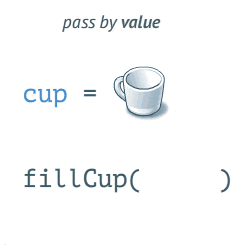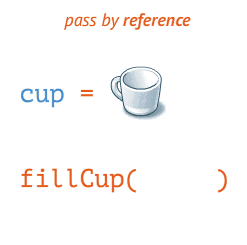Solidity is an object-oriented, high-level, and compiled programming language for writing smart contracts, as well as building and deploying Dapps on different blockchains.
Solidity, like any other programming language, has its own data types and data structures, but with a different syntax and application.
This tutorial will go over some of the most often used data types and data structures in Solidity programming languages.
Nature of Solidity Data Types
Solidity is a statically typed, strongly typed language in nature that performs type checking before the source code is executed.
As a statically typed language, Solidity requires the programmer to declare the data type of each variable ahead of compiling the code (compile-time).
While Solidity as a strongly typed language means the data type of a variable cannot be modified or converted to another data type within the program.
Solidity Data Types
Solidity, like other programming languages, divides its data types into two categories: value types and reference types.
Value Types in Solidity
A value type variable is one that stores data directly in the stack memory allocated to itself.
These types are passed by value, which means they are copied anytime they are assigned to a new variable or supplied as an argument to a function and any changes made to the new copies do not affect the original data.

1.) Integers
The integer data type in Solidity is used to store integer values. An integer type is further grouped into int and uint used to declare signed and unsigned type of integers respectively.
i. The int/signed integer
The int keyword is used to declare signed integers. The signed integer is a data type that can hold both positive and negative integer values in smart contracts.
pragma solidity ^ 0.8.13; contract Signed_Integer_Example{ int year = 2022; int temperature = -89; } ii. The uint/unsigned integer
The uint keyword is used to declare unsigned integers. The unsigned integer is a data type that can only hold positive integer values in smart contracts.
pragma solidity ^ 0.8.13; contract Unsigned_Integer_Example{ uint year = 2022; uint temperature = -89; } When you try to assign a negative value to an unsigned data type, you will receive the following TypeError message:
TypeError: Type int_const -89 is not implicitly convertible to expected type uint256. Cannot implicitly convert signed literal to an unsigned type. 2.) Bytes
Bytes in Solidity are fixed-size byte arrays that contain a sequence of bytes. The length of the byte array is defined at the front of the bytes as in bytes1 to bytes32.
The number is equivalent to the number of characters the byte array variable can contain.
pragma solidity ^ 0.8.13; contract Bytes_Array_Example{ bytes1 one_character = "a"; bytes2 two_characters = "ab"; bytes3 three_characters = "abc"; bytes4 four_characters = "abcd"; bytes5 five_characters = "abcde"; bytes32 thrity_two_characters = "abcdefghijklmnopqrstuvwxyz123456"; } When you attempt to assign a number of characters that exceed the fixed size of bytes, as shown below:
pragma solidity ^ 0.8.13; contract Bytes_Array_Example{ bytes1 one_character = "ab"; bytes1 two_characters = "abc"; } You will receive the following TypeError message:
TypeError: Type literal_string "abc" is not implicitly convertible to expected type bytes1. Literal is larger than the type. 3.) Booleans
Boolean in Solidity is denoted by the bool keyword and like every other programming language, boolean in Solidity accepts just two values: true and false:
pragma solidity ^ 0.8.13; contract Boolean_Example{ bool isEthereumMerge = true; bool currentUserCanMintToken = false; bool isRaining = "true"; bool isAdmin = "false"; } When you try to assign a non-boolean value to a boolean variable, you will receive the following TypeError message:
TypeError: Type literal_string "true" is not implicitly convertible to the expected type bool. 4.) Address
The address is a special data type in Solidity, capable of receiving and sending Ether to and from it. The address data type is designed to store an Ethereum address, which usually begins with the 0x value.
Addresses are 20 bytes in size and contain 42 characters.
0x0000000000000000000000000000000000000000 Addresses are also non-case-sensitive hexadecimal digits generated from the Keccak-256 hash of the public key.
When you try to assign a string to an address data type, as shown below:
pragma solidity ^ 0.8.13; contract Address_Example{ address user_address = 0x0000000000000000000000000000000000000000; address user_home_address = "Street 2, downtown road"; } You’ll get the following TypeError message:
TypeError: Type literal_string "Street 2, downtown road" is not implicitly convertible to expected type address. When you try to assign a non-hexadecimal number to an address data type, as shown below with an octal number:
pragma solidity ^ 0.8.13; contract Address_Example{ address user_address = 0x0000000000000000000000000000000000000000; address phone_address = 080123456789; } You’ll get the following ParserError message:
ParserError: Octal numbers not allowed. Address value types are further divided into two:
| function | address | address payable |
|---|---|---|
| Check address balance |  |  |
| Send Ether |  |  |
| Receive Ether |  |  |
Pro Tip: When you want your smart contract to receive and send Ether, use the address payable value type. When you don’t want your smart contract to receive or transfer Ether, use the plain address value type.
5.) Enums
Enum data types, also known as enumerations, enable developers to create user-defined data types. The user-defined data are names assigned to an integral constant value starting from zero.
pragma solidity ^ 0.8.13; contract Enum_Example{ enum Status { Sending, Success, Failed } Status status; function sendSomething () public { status = Status.Sending; } } From the code snippet above, we created a Status enum that holds the status of action when we send something. We can then use the enum to update the status of the action to any of the predefined statuses in the Status enum.
Reference Types in Solidity (Data Structure)
A reference type variable is one that stores the location (memory address) of their data on the Heap memory and they don’t share their data directly.
Changes made to the reference data will always affect the original data.

Examples of reference types in Solidity include strings, structs, arrays, and mapping.
1.) String
The string type is a sequence of characters. Solidity supports both string literals using single-quotes ' ' and double-quotes " ".
pragma solidity ^ 0.8.13; contract String_Example{ string name = "John Doe"; } 2.) Structs
The struct data type is a reference data type that can be used to create a structure of other data types. A struct can contain both value type and reference type including other structs but not a struct of itself.
A struct can be created in Solidity using the syntax below:
struct <Struct_Name> { <data_type> <variable_name>; } The data_type can be a string, int, uint, bool, or any solidity data type. Structs can be declared outside of a smart contract and imported into another contract.
A use case of a struct can be seen below:
pragma solidity ^ 0.8.13; contract Struct_Example{ struct UserProfile { string fullName; bool isOnboarded; uint age; } UserProfile _newUserProfile = UserProfile("Ayodele Samuel Adebayo", true, 19); function getUserProfile() public view returns (string memory, bool , uint ){ return (_newUserProfile.fullName, _newUserProfile.isOnboarded, _newUserProfile.age); } } From the code above; we created a struct for the user profile that expects a fullName, the isOnboarded status, and the user age. We then use this structure to create a new user with a function that returns the information of the created profile.
Takeaway: Using structs in Solidity makes our code more organized, maintainable, reusable, and readable.
3.) Arrays
An array is a collection of variables with the same data type. They’re stored in a continuous memory location with each array item having a unique index.
Array in Solidity can be fixed or dynamic in size and each array item can be searched by its unique index.
i. Dynamic Array
A dynamic array can be created in Solidity using the syntax below:
pragma solidity ^ 0.8.13; contract Dynamic_Array_Syntax{ <datatype[]> <variable_name> = <[array_items]> } Below is an example of a string dynamic array of names and a uint dynamic array of numbers:
pragma solidity ^ 0.8.13; contract Dynamic_Array_Example{ string[] arrayOfNames = ["Faith", "Becky", "Steve"]; uint[] arrayOfNumbers = [0, 1, 2, 3, 4, 5]; } ii. Fixed-Size Array
A fixed-size array can be created using the syntax below:
pragma solidity ^ 0.8.13; contract Fixed_Size_Array_Syntax{ <datatype[size]> <variable_name> = <[array_items]> } Below is an example of a 2 fixed-sized string array of names and 1 fixed-sized uint dynamic array of numbers:
pragma solidity ^ 0.8.13; contract Fixed_Size_Array_Example{ string[2] arrayOfNames = ["Faith", "Becky"]; uint[1] arrayOfNumbers = [0]; } When you try to exceed the fixed-size limit:
pragma solidity ^ 0.8.13; contract Fixed_Size_Array_Example{ string[2] arrayOfNames = ["Faith", "Becky", "Steve"]; uint[1] arrayOfNumbers = [0, 1, 2]; } You’ll get the following TypeError messages, respectively:
TypeError: Type string[3] memory is not implicitly convertible to expected type string[2] storage ref. TypeError: Type uint8[3] memory is not implicitly convertible to expected type uint256[1] storage ref. 4.) Mapping
Mapping in Solidity is a key-value pair data structure that functions similarly to a dictionary in Python and hashtables or objects in JavaScript.
Mapping can be created in Solidity with the following syntax:
pragma solidity ^ 0.8.13; contract Mapping_Syntax{ mapping (key => value) variable_name; } Where the key can be any data type except for reference type and the value can be both value type and reference type.
Below is an example of mapping users’ wallet addresses to their balances:
pragma solidity ^ 0.8.13; contract Mapping_Example{ mapping (address => uint) users_balances; } From the above data structure implementation, we can retrieve the crypto balance of users from the blockchain in uint type using their wallet address.
Wrapping Up
Data types and data structures are the foundation of any programming language and the building blocks for developing advanced Dapps with Solidity.
In this tutorial, we’ve gone through the most commonly used data types and data structures in Solidity programming language.
What’s Next?
Now that you’ve learned about the data types and data structures in Solidity:
This article is a part of the Hashnode Web3 blog, where a team of curated writers are bringing out new resources to help you discover the universe of web3. Check us out for more on NFTs, DAOs, blockchains, and the decentralized future.
Read More: second-pocket-shoot-73.hashnode.dev









 Compound
Compound  Wormhole
Wormhole  Sun Token
Sun Token  Staked HYPE
Staked HYPE  Movement
Movement  Popcat
Popcat  Coinbase Wrapped Staked ETH
Coinbase Wrapped Staked ETH  Ether.fi Staked BTC
Ether.fi Staked BTC  Mog Coin
Mog Coin  Amp
Amp  Gnosis
Gnosis  Akash Network
Akash Network  Livepeer
Livepeer  Swell Ethereum
Swell Ethereum  Polygon Bridged WBTC (Polygon POS)
Polygon Bridged WBTC (Polygon POS)  Trust Wallet
Trust Wallet  JUST
JUST  Polygon
Polygon  Olympus
Olympus  Terra Luna Classic
Terra Luna Classic  Polygon PoS Bridged WETH (Polygon POS)
Polygon PoS Bridged WETH (Polygon POS)  Legacy Frax Dollar
Legacy Frax Dollar  Wrapped AVAX
Wrapped AVAX  Binance-Peg BUSD
Binance-Peg BUSD  Plume
Plume  Global Dollar
Global Dollar  Axelar
Axelar  Ripple USD
Ripple USD  MANTRA
MANTRA  SuperVerse
SuperVerse  Safe
Safe  Bybit Staked SOL
Bybit Staked SOL  Turbo
Turbo  1inch
1inch  Berachain
Berachain  Creditcoin
Creditcoin  Cheems Token
Cheems Token  cat in a dogs world
cat in a dogs world  Aave USDC (Sonic)
Aave USDC (Sonic)  Quorium
Quorium  BTSE Token
BTSE Token  Dash
Dash  aBTC
aBTC  Kusama
Kusama  cWBTC
cWBTC  Decred
Decred  ai16z
ai16z